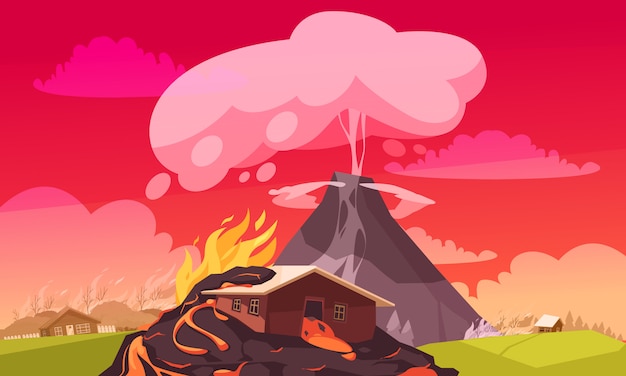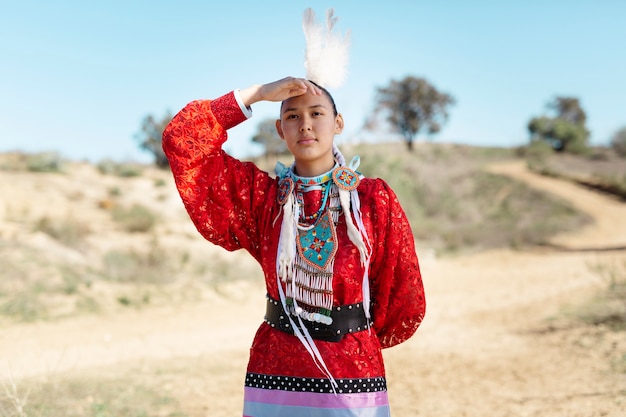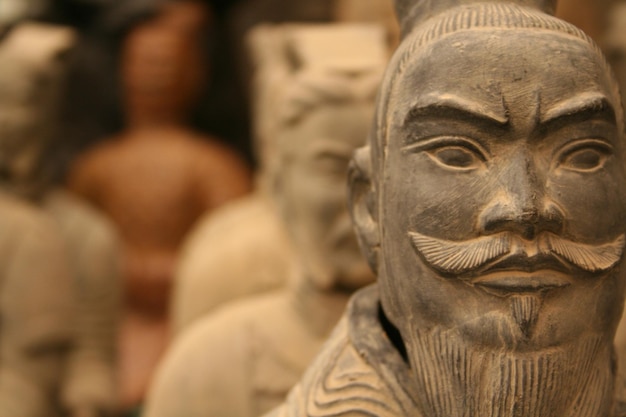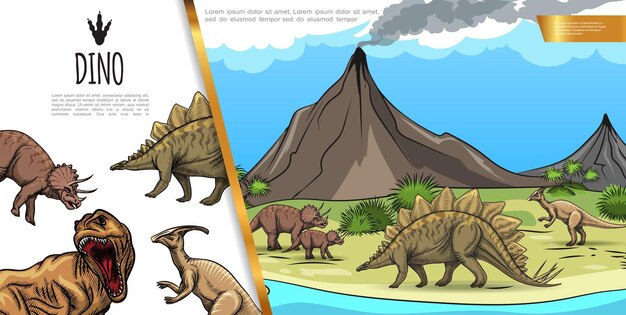Interesting Facts About the Mississippi River
The Mississippi River is the second-longest river in the United States.
The river spans over 2,300 miles from its source in Minnesota to its mouth in the Gulf of Mexico.
The Mississippi River is known for its diverse wildlife, including dolphins, alligators, and numerous bird species.
The river has been a significant trade route since the early days of American settlement.
The Mississippi River played a crucial role in the exploration and expansion of the American West.
The river flows through ten U.S. states: Minnesota, Wisconsin, Iowa, Illinois, Missouri, Kentucky, Tennessee, Arkansas, Mississippi, and Louisiana.
The Mississippi River is considered the cultural birthplace of blues music.
The river is home to various species of fish, including catfish, bass, and sturgeon.
The Mississippi River has witnessed several significant historical events, such as the Battle of Vicksburg during the Civil War.
The Mississippi River Delta is the largest river delta in North America.
The river is known for its majestic steamboats that navigated its waters in the 19th century.
The Mississippi River served as a lifeline for many Native American tribes who relied on its resources for survival.
The river’s name originates from the Ojibwe word misi-ziibi, which means Great River.
The Mississippi River’s watershed covers approximately 1.2 million square miles, making it one of the largest in the world.
The river is prone to flooding, with several major floods occurring throughout history, such as the Great Mississippi Flood of 19
The Mississippi River is a popular destination for recreational activities, including boating, fishing, and kayaking.
Mark Twain, the author of Adventures of Huckleberry Finn, had a deep connection to the Mississippi River and its culture.
The Mississippi River has inspired numerous works of literature, art, and music.
The river is surrounded by beautiful riverfront cities, such as New Orleans, St. Louis, and Memphis.
The Mississippi River has different names in different Native American languages, reflecting its cultural significance.
The river provides vital irrigation for farmland along its course, supporting agricultural productivity.
The Mississippi River has many historic bridges, such as the St. Louis Gateway Arch and the Eads Bridge in St. Louis.
The river supports a diverse ecosystem with wetlands, forests, and swamps along its banks.
The Mississippi River is an essential source of drinking water for millions of people in the United States.
The river’s water quality is influenced by various factors, including agricultural runoff and industrial pollution.
The Mississippi River is a migratory route for birds, allowing them to travel between their breeding and wintering grounds.
The river has witnessed the rise and fall of several civilizations, from Native American tribes to European settlements.
The Mississippi River is a meandering river with numerous twists and turns along its course.
The river’s water levels fluctuate seasonally, with high water during spring and low water during summer.
The Mississippi River is a critical transportation route, supporting the movement of goods and commodities.
The river’s water is often used for recreational purposes, such as swimming and water skiing.
The Mississippi River is known for its scenic beauty, with breathtaking sunsets and picturesque landscapes.
The river has several picturesque islands, such as Sugar Island and Hog Island.
The Mississippi River is home to numerous historical landmarks, including plantations and forts.
The river has inspired painters, photographers, and filmmakers who capture its beauty in their artworks.
The Mississippi River is an important source of hydropower, with several dams and hydroelectric plants along its course.
The river is a natural boundary between states, creating a sense of geographical identity and rivalry.
The Mississippi River is a crucial habitat for endangered species, such as the Pallid Sturgeon and the Interior Least Tern.
The river’s floodplains provide fertile agricultural lands, supporting the production of crops and livestock.
The Mississippi River has contributed significantly to American cuisine, with dishes like gumbo and crawfish étouffée originating in its regions.
The river’s water is used in industrial processes, such as power generation and manufacturing.
The Mississippi River has witnessed the growth of major cities, including Minneapolis, St. Louis, and New Orleans.
The river has inspired countless songs, poems, and novels that celebrate its allure and mystique.
The Mississippi River has been a subject of scientific research and exploration, uncovering valuable insights into its ecology and geology.
The river’s economic impact extends beyond the United States, as it serves as a gateway for international trade through the Port of New Orleans.
Fascinating Facts about Stevie Wonder
Stevie Wonder was born on May 13, 1950, in Saginaw, Michigan.
Stevie Wonder is blind since birth.
Stevie Wonder’s real name is Stevland Hardaway Morris.
Stevie Wonder is a renowned American singer, songwriter, and multi-instrumentalist.
Stevie Wonder has won 25 Grammy Awards throughout his career.
Stevie Wonder’s first hit single was Fingertips (Pt. 2) at the age of
7. Stevie Wonder’s music career started at Motown Records in the early 1960s.
Stevie Wonder is known for his distinctive soulful voice.
Stevie Wonder has released 23 studio albums.
Stevie Wonder is a skilled harmonica player.
Stevie Wonder’s album Songs in the Key of Life is considered one of the greatest albums of all time.
Stevie Wonder’s song Superstition is an iconic funk-rock track.
Stevie Wonder has written and produced songs for other artists, including Michael Jackson and Smokey Robinson.
Stevie Wonder was inducted into the Rock and Roll Hall of Fame in 1989.
Stevie Wonder is actively involved in advocating for social and political issues.
Stevie Wonder is a strong supporter of the Civil Rights Movement.
Stevie Wonder has performed at numerous charity events throughout his career.
Stevie Wonder has a star on the Hollywood Walk of Fame.
Stevie Wonder has been a UN Messenger of Peace since 2009.
Stevie Wonder has performed alongside musical legends like Ray Charles and Paul McCartney.
Stevie Wonder’s songs often have socially conscious and uplifting messages.
Stevie Wonder’s album Innervisions won the Grammy Award for Album of the Year in 1974.
Stevie Wonder is a skilled pianist.
Stevie Wonder is known for his improvisational skills during live performances.
Stevie Wonder’s song I Just Called to Say I Love You reached number one on the Billboard Hot 100 chart.
Stevie Wonder’s music combines elements of soul, R&B, pop, funk, and jazz.
Stevie Wonder’s songs often feature intricate and catchy melodies.
Stevie Wonder has collaborated with numerous musicians, including Elton John and Beyoncé.
Stevie Wonder’s album Talking Book includes the hit song Superstition.
Stevie Wonder’s musical influences include Ray Charles and Sam Cooke.
Stevie Wonder has performed at several presidential inaugurations.
Stevie Wonder has received the Presidential Medal of Freedom from President Barack Obama.
Stevie Wonder’s Livin’ for the City addresses social issues like racism and poverty.
Stevie Wonder’s song As is known for its optimistic and uplifting lyrics.
Stevie Wonder’s music is timeless and continues to resonate with audiences of all ages.
Stevie Wonder is known for his charismatic stage presence.
Stevie Wonder has received honorary doctorate degrees from several universities.
Stevie Wonder’s album Hotter than July includes the popular song Master Blaster (Jammin’).
Stevie Wonder is an advocate for accessible technology for the visually impaired.
Stevie Wonder has sold over 100 million records worldwide.
Stevie Wonder has been awarded the Grammy Lifetime Achievement Award.
Stevie Wonder’s song Sir Duke is a tribute to his musical heroes.
Stevie Wonder’s album In Square Circle includes the hit song Part-Time Lover.
Stevie Wonder’s performances are known for their energy and passion.
Stevie Wonder’s music continues to inspire and influence countless musicians around the world.
Fascinating Facts about the Executive Branch
The executive branch is one of the three branches of government in the United States.
The president is the head of the executive branch.
The executive branch is responsible for enforcing and carrying out laws.
The executive branch includes the vice president and the president’s cabinet.
The executive branch is located in the White House.
The executive branch has the power to veto legislation passed by Congress.
The president is elected by the Electoral College.
The president serves a four-year term.
The executive branch is responsible for negotiating and signing treaties with foreign countries.
The executive branch plays a crucial role in the appointment of federal judges.
The president can issue executive orders to implement policies without congressional approval.
The executive branch includes various departments such as the Department of Defense, Department of State, and Department of Justice.
The president is the commander-in-chief of the armed forces.
The executive branch is responsible for the nation’s foreign policy.
The executive branch can mobilize federal resources in times of crisis or national emergency.
The president has the power to grant pardons and reprieves.
The executive branch oversees the administration of federal agencies.
The president represents the United States in international affairs.
The vice president is next in line to assume the presidency in case of the president’s death or resignation.
The executive branch can recommend legislation to Congress.
The president delivers the State of the Union address annually.
The executive branch has the power to nominate ambassadors and federal judges.
The president can call for a special session of Congress.
The executive branch plays a key role in formulating the federal budget.
The president can appoint individuals to serve as heads of federal agencies.
The executive branch is responsible for national security and defense.
The president has the power to declare a national emergency.
The executive branch can issue executive orders to regulate immigration.
The vice president presides over the Senate and can cast a tie-breaking vote.
The executive branch can grant federal funding to states and local governments.
The president has the power to negotiate trade agreements with other countries.
The executive branch can impose sanctions on foreign nations.
The president appoints individuals to fill vacancies in the federal judiciary.
The executive branch can create advisory councils and task forces to address specific issues.
The president can nominate individuals for key positions within the executive branch, such as the secretary of state or secretary of defense.
The executive branch plays a crucial role in the development and implementation of economic policies.
The president can deliver speeches to rally public support for certain policies or initiatives.
The executive branch can issue regulations to implement laws passed by Congress.
The president has the power to grant posthumous honors and awards.
The executive branch can establish policies and guidelines for federal employees.
The president can negotiate and sign trade agreements with other countries.
The executive branch can veto specific provisions in legislation while signing the rest into law.
The president can issue proclamations to commemorate important events or recognize significant contributions.
The executive branch is responsible for maintaining diplomatic relations with other nations.
The president has the power to commute sentences and reduce penalties for individuals convicted of federal crimes.
10 Fascinating Facts About the Executive Branch
The executive branch is one of the three branches of government in the United States.
It is responsible for enforcing laws and carrying out the day-to-day operations of the government.
The President of the United States is the head of the executive branch.
The executive branch consists of various agencies and departments.
The President has the power to veto bills passed by the legislature.
The President can also issue executive orders to implement policies.
The executive branch plays a crucial role in diplomacy and foreign relations.
The President appoints Cabinet members who serve as advisors.
The Cabinet includes departments such as State, Treasury, and Defense.
The President can nominate judges to the Supreme Court, which require Senate confirmation.
The executive branch can negotiate and sign treaties with other countries.
The President serves as the Commander-in-Chief of the armed forces.
The executive branch is responsible for the nation’s economic policies.
The President delivers the annual State of the Union address.
The executive branch administers federal agencies like the FDA and EPA.
The President can issue pardons or reduce criminal sentences.
The executive branch manages the federal budget.
The President can declare a state of emergency in certain situations.
The executive branch can implement policies related to healthcare, education, and immigration.
The President must be a natural-born citizen of the United States.
The executive branch is designed to balance power with the legislative and judicial branches.
The President can be impeached by the House of Representatives and tried by the Senate.
The executive branch oversees the implementation of federal laws across the country.
The President holds ceremonial and diplomatic responsibilities.
The executive branch operates independently from the legislative and judicial branches.
The President is elected for a four-year term and can be reelected once.
The executive branch is responsible for protecting national security.
The President has the power to negotiate and sign trade agreements.
The executive branch manages the federal bureaucracy.
The President can issue pardons to individuals convicted of federal crimes.
The executive branch works closely with Congress to pass legislation.
The President can address the nation through press conferences and speeches.
The executive branch has the power to enforce federal laws and regulations.
The President can grant citizenship or permanent residency through executive actions.
The executive branch oversees the federal disaster response efforts.
The President has the power to call a special session of Congress.
The executive branch plays a crucial role in national security and defense policies.
The President can propose a federal budget to Congress for approval.
The executive branch coordinates with state and local governments on various issues.
The President can nominate ambassadors and other diplomatic officials.
The executive branch is responsible for managing relations with Native American tribes.
The President can issue proclamations to honor and recognize individuals or events.
The executive branch is responsible for protecting the country’s natural resources.
The President can deploy troops and order military actions abroad.
The executive branch plays a key role in shaping the nation’s economic policies. Please note that some of these statements are general facts, while others may present opinions or interpretations.
Fascinating Facts about the Mantle
The mantle is the layer of Earth located between the crust and the core.
It is primarily composed of solid rock.
The mantle extends to a depth of about 2,900 kilometers.
The temperature in the upper mantle can reach up to 900 degrees Celsius.
The mantle is responsible for the movement of tectonic plates.
It is a dynamic layer, constantly undergoing convection currents that drive plate tectonics.
The mantle is divided into two main regions: the upper mantle and the lower mantle.
The upper mantle is more rigid, while the lower mantle is more viscous.
The upper mantle is composed of both solid and semi-solid materials.
The lower mantle is primarily composed of solid rock.
The mantle contains large amounts of iron, magnesium, and silicon.
It is the most voluminous layer of the Earth, making up about 84% of its total volume.
The flow of the mantle contributes to the generation of Earth’s magnetic field.
The mantle plays a crucial role in the formation of volcanoes and earthquakes.
The boundary between the mantle and the core is known as the core-mantle boundary.
The mantle is not a uniform layer; its composition and density vary across different regions.
The uppermost part of the mantle is called the asthenosphere, which is partially molten.
The mantle takes up a significant portion of Earth’s mass, accounting for about 67% of its total mass.
Scientists study the mantle using various methods, including seismic imaging and laboratory experiments.
The movement of the mantle is not only responsible for shaping Earth’s surface but also influences its climate.
The mantle is believed to have originated from the gradual cooling and solidification of the early Earth.
The mantle is much thicker than the crust, which is only about 35 kilometers thick on average.
The mantle’s composition has a significant impact on the formation and composition of rocks found at the Earth’s surface.
The presence of minerals such as olivine and pyroxene indicates the mantle’s influence on the formation of rocks.
The mantle is under immense pressure, with pressures increasing with depth.
The Mohorovičić discontinuity, also known as the Moho, marks the boundary between the crust and the upper mantle.
The boundary between the upper mantle and the lower mantle is called the 660-kilometer discontinuity.
The mantle is thought to have a layered structure, with different mineral compositions at various depths.
The mantle is so deep that humans have never directly observed or accessed it.
The mantle’s convection currents can cause the movement of continents over time.
The mantle’s convective processes can lead to the formation of mountain ranges.
The movement of the mantle is thought to be one of the factors contributing to the existence of Earth’s magnetic field.
Earthquakes can provide valuable information about the composition and behavior of the mantle.
The mantle is much denser than the crust, with average densities ranging from 3.3 to 5.7 grams per cubic centimeter.
The mantle contains a significant amount of primordial heat left over from the formation of the Earth.
The mantle’s convection currents can cause a transfer of heat from the Earth’s interior to the surface.
The movement of the mantle can also influence the distribution of minerals and resources found on Earth.
The mantle’s behavior and dynamics have a direct impact on the geology of our planet.
The mantle’s movement can cause the formation of magma chambers beneath volcanoes.
Scientists use computer models to simulate the mantle’s behavior and understand its complexities.
The mantle is crucial for sustaining the Earth’s internal heat and energy balance.
The mantle’s behavior can change over long geological timescales, leading to shifts in climate and global tectonics.
The study of the mantle provides insights into the Earth’s geological history and processes.
Understanding the mantle is essential for predicting and mitigating the risks associated with natural disasters like earthquakes and volcanic eruptions.
The mantle is a dynamic and ever-changing layer that continues to intrigue scientists and drive discoveries about our planet’s inner workings.
Day of the Dead – Fascinating Facts You Should Know
The Day of the Dead is a traditional Mexican holiday celebrated on November 1st and 2nd.
It is believed that the spirits of deceased loved ones return to Earth during this time.
Families create altars in their homes to welcome the spirits with their favorite foods and drinks.
Sugar skulls, or calaveras, are a popular decoration during the Day of the Dead.
Marigolds are the traditional flowers used to decorate altars and graves during this holiday.
The Day of the Dead is not a sad occasion, but rather a celebration of life and the afterlife.
It is customary to visit the graves of loved ones and clean them during this time.
Special bread called pan de muerto is baked and enjoyed during the Day of the Dead celebrations.
Some families hold all-night vigils at the gravesites of their loved ones.
The holiday has pre-Columbian origins and has been celebrated for over 3,000 years.
Day of the Dead celebrations often include music, dancing, and parades.
The holiday is recognized by UNESCO as an Intangible Cultural Heritage of Humanity.
The colorful paper cutouts, known as papel picado, are commonly used to decorate during this time.
The Day of the Dead is a time to remember and honor deceased family members and friends.
Many people wear traditional costumes and face paint during the celebrations.
The holiday is a fusion of indigenous beliefs and Catholic traditions.
Day of the Dead festivities usually include the lighting of candles and incense on altars.
It is believed that the spirits of departed children return on November 1st, while adult spirits return on November 2nd.
The holiday coincides with the Catholic holidays of All Saints’ Day and All Souls’ Day.
Day of the Dead celebrations vary from region to region in Mexico and can also differ among families.
Some families make special offerings for deceased pets during this time.
The holiday is a time for families to come together and remember their ancestors.
Altars are often decorated with photographs, personal belongings, and other mementos of the deceased.
Day of the Dead celebrations can last for several days, with gatherings and feasts for relatives and friends.
The holiday is a time to reflect on mortality and the cycle of life and death.
Many Mexican communities in the United States also celebrate the Day of the Dead.
Day of the Dead masks are often worn during the celebrations.
The holiday is not meant to be spooky or scary, but rather a joyful commemoration of loved ones.
It is believed that the spirits of the deceased can hear the prayers and messages left for them.
Day of the Dead celebrations often include storytelling and sharing memories of the departed.
The holiday celebrates the belief that death is simply a natural part of the human experience.
Some families set up temporary altars in public spaces for anyone to pay respects to their deceased loved ones.
The Day of the Dead is a time for reflection on the interconnectedness of life and death.
Many communities hold processions through cemeteries during the holiday, singing and carrying candles.
Day of the Dead celebrations can be both solemn and festive, with a mix of tears and laughter.
The holiday is an opportunity for families to pass down traditions and stories to younger generations.
Special prayers, known as calacas, are often recited during the celebrations.
Day of the Dead artwork often features skeletons, skulls, and vibrant colors.
The holiday serves as a reminder to cherish and honor our loved ones while they are still alive.
Day of the Dead celebrations have gained popularity around the world as a unique cultural event.
The holiday offers a chance for healing and closure for those grieving the loss of a loved one.
Some families stay up all night playing music and telling jokes to entertain the spirits.
The intricate sugar skull designs symbolize the individuality and uniqueness of each departed soul.
Day of the Dead celebrations encourage a positive and healthy perspective on death and dying.
The holiday is a time to celebrate the lives of those who have passed and keep their memory alive.
Interesting Facts about the Connecticut Colony
The Connecticut Colony was founded in 1636 by Thomas Hooker.
Connecticut was known as the Constitution State due to its early adoption of a written constitution in 16
3. The colony was originally settled by Puritans seeking religious freedom.
Connecticut is home to Yale University, one of the oldest and most prestigious universities in the United States.
The first colonial constitution in America, the Fundamental Orders, was written in Connecticut.
The Connecticut Colony was one of the original thirteen colonies that declared independence from Great Britain.
Connecticut played a significant role in the American Revolution, providing troops and supplies to the Continental Army.
The first American submarine, the Turtle, was developed and tested in Connecticut during the Revolutionary War.
Connecticut is often referred to as the Nutmeg State due to its historical association with nutmeg traders.
The state’s capital, Hartford, was once a major center of the American insurance industry.
Connecticut has a rich maritime history, with numerous ports and shipbuilding industries.
The Charter Oak, a famous white oak tree in Connecticut, is said to have hidden Connecticut’s Royal Charter from King James II.
Connecticut has a diverse landscape, including coastal beaches, rolling hills, and beautiful forests.
The state’s nicknames include the Land of Steady Habits and the Constitution State.
Mark Twain, one of America’s most celebrated writers, lived in Connecticut and wrote his famous novel, Adventures of Huckleberry Finn, there.
The Connecticut River, which runs through the state, played a crucial role in the early settlement and development of Connecticut.
The first public library in America, the Scoville Library, was established in Salisbury, Connecticut, in 1803.
The state is known for its vibrant arts and entertainment scene, with many theaters, museums, and galleries.
Connecticut is home to the Mystic Seaport, the nation’s leading maritime museum and historic waterfront.
The state’s official song is Yankee Doodle, which originated during the American Revolution.
Connecticut is heavily influenced by Dutch and English architectural styles.
The state has a strong tradition of manufacturing, including firearms, textiles, and machinery.
Connecticut has one of the highest per capita incomes in the United States.
The state has a rich Native American history, with several tribes, including the Mohegan and Pequot, residing in the area.
Connecticut was an important stop on the Underground Railroad, helping escaped slaves on their journey to freedom.
The state has a vibrant sports culture, with teams like the UConn Huskies basketball team being particularly successful.
Connecticut is known for its beautiful fall foliage, attracting tourists from around the country.
The state’s coastline offers excellent opportunities for boating, fishing, and other water activities.
Connecticut is home to some of the country’s oldest and most charming small towns, such as Litchfield and Mystic.
The state is known for its delicious seafood, especially its lobster and clam dishes.
Connecticut is a leader in renewable energy, with a significant focus on wind and solar power.
The Connecticut Colony was influential in the development of the United States’ legal system.
The Foxwoods Resort Casino and Mohegan Sun, both located in Connecticut, are among the largest casinos in the United States.
The Hartford Courant, established in 1764, is one of the oldest continuously published newspapers in the United States.
Connecticut’s education system is highly regarded, with many top-ranked schools and universities.
The Mark Twain House in Hartford is a popular tourist attraction, offering a glimpse into the author’s life and work.
Connecticut has a strong tradition of maritime art, with several museums dedicated to showcasing this genre.
The state is known for its lively festivals and events, such as the International Festival of Arts & Ideas in New Haven.
Connecticut has strict gun control laws, making it one of the safest states in terms of firearm-related incidents.
The state’s official insect is the praying mantis, chosen due to its predatory nature and resemblance to Connecticut’s forefathers.
Connecticut has a diverse population, with residents from various cultural backgrounds and ethnicities.
The state is home to many prestigious boarding schools and private academies.
Connecticut has a high standard of healthcare, with numerous top-ranked hospitals and medical facilities.
The Steelpointe Harbor development in Bridgeport aims to revitalize the waterfront and attract businesses and visitors to the area.
Connecticut is known for its picturesque countryside, with many farms offering agritourism experiences, such as apple picking and wine tasting.
Facts About Wildfires – What You Need to Know
Wildfires are a natural part of forest ecosystems.
On average, wildfires burn an area of 4.5 million acres in the United States each year.
Smokey Bear, a popular mascot, was created to educate people about preventing wildfires.
Lightning strikes are responsible for a significant number of wildfires.
Humans are responsible for starting over 80% of wildfires in the United States.
Climate change has contributed to longer and more intense wildfire seasons.
Wildfires release large amounts of carbon dioxide, contributing to greenhouse gas emissions.
Dead plant material, known as fuel, provides the perfect conditions for wildfires to spread.
Wildfires can jump rivers, roads, and even firebreaks due to flying embers.
Firefighters use various techniques, including bulldozers and backfires, to control wildfires.
Wildfires can have devastating effects on wildlife populations and their habitats.
Some plants have adapted to benefit from wildfires, such as the lodgepole pine, whose cones require the heat of a fire to open and release their seeds.
Smoke from wildfires can travel thousands of miles, affecting air quality in distant areas.
Aircraft, such as water bombers, are often utilized to drop fire retardants to help suppress wildfires.
Wildfires can cause significant economic losses, including damage to infrastructure and loss of agricultural resources.
The Great Fire of London in 1666, which destroyed a large part of the city, was one of the most famous wildfires in history.
Wildfires can create their own weather patterns, including fire whirls and pyrocumulus clouds.
Some regions, like California, experience fire seasons that extend nearly throughout the year.
Climate change is projected to increase the frequency and severity of wildfires.
Wildfires can cause erosion and soil degradation, which can lead to long-term ecological impacts.
The largest recorded wildfire in the United States was the Great Fire of 1910, which burned about three million acres in Idaho and Montana.
Ash from wildfires contains nutrients that can replenish soil fertility when it settles.
Wildfires can lead to an increased risk of mudslides and flash flooding during heavy rains.
Firebreaks, cleared areas with no flammable material, are created to prevent wildfires from spreading.
Wildfires can travel faster uphill due to the increased availability of oxygen.
Indigenous communities have used controlled burns as a land management tool for centuries to prevent catastrophic wildfires.
Wildlife species that are well-adapted to fire, like certain bird species, may benefit from post-fire habitat conditions.
Smoke from wildfires can pose serious health risks, particularly for people with respiratory issues.
Wildfires can produce intense heat, often reaching temperatures of over 1,400 degrees Fahrenheit (760 degrees Celsius).
Fire tornadoes, also known as firenadoes, are rare but can occur during extreme wildfires.
Some plants, like the eucalyptus tree, have adaptations that promote the spread of fire, as their leaves are highly flammable.
Controlled burns, when conducted properly, can help prevent more destructive and unmanageable wildfires.
Wildfires are a major concern for national parks and other protected areas, as they can threaten fragile ecosystems.
Smokejumpers, highly trained firefighters, parachute into remote areas to fight wildfires.
The term wildfire comes from the Old English word wiltēar, meaning willow and blaze.
Wildfires can lead to the displacement of communities and the loss of homes and livelihoods.
Australia experiences some of the most severe wildfires, with the Black Saturday bushfires in 2009 being one of the deadliest in the country’s history.
Wildfires can cause power outages and damage electrical infrastructure.
The increased accumulation of dead trees in forests, due to factors like insect infestations, has contributed to a greater risk of wildfires in some areas.
Wildfire smoke can have a negative impact on air travel, leading to canceled or delayed flights.
Rapid response is crucial in containing wildfires, as they can double in size within minutes under favorable conditions.
Wildlife rescue efforts are often required after major wildfires, as many animals flee or are injured during the events.
In some Native American cultures, fire is considered a cleansing and rejuvenating force, and controlled burns play a vital role in keeping ecosystems healthy.
Natural fire-resistant barriers, such as rivers or rocky terrain, can help prevent the spread of wildfires.
Effective public education campaigns about preventing wildfires have led to a decrease in accidental fire starts in recent years.
Interesting Facts about Border Collies
Border collies are known for their exceptional intelligence.
These dogs have a strong herding instinct.
Border collies are highly energetic and require plenty of exercise.
They excel in various dog sports, including agility and obedience trials.
Border collies are often considered one of the most intelligent dog breeds.
With proper training, they can learn a wide range of commands and tricks.
Border collies have a strong desire to please their owners.
They have a natural ability to understand and respond to verbal and non-verbal cues.
Border collies are highly focused and have great attention to detail.
They are considered excellent working dogs and are often used in sheep farming.
Border collies have a distinctive stalk and stare herding technique.
They have a strong work ethic and are happiest when given a job to do.
Border collies have an incredible amount of stamina and endurance.
They are known for their lightning-fast reflexes and agility.
Border collies have a double coat that helps them stay warm in colder climates.
They come in a variety of coat colors, including black and white, red and white, and tri-color.
Border collies have a natural instinct to gather and control a group of animals.
They are highly trainable and excel in obedience training.
Border collies are often used in search and rescue operations.
They are known for their problem-solving skills and can quickly assess a situation.
Border collies have a strong bond with their owners and are extremely loyal.
They are good with children and other pets when properly socialized.
Border collies have a high prey drive and may try to herd small animals or children.
They have been bred for centuries for their herding abilities.
Border collies have a reputation for being workaholics.
They thrive in environments where they can be mentally and physically stimulated.
Border collies are highly adaptable and can live in various climates.
They have a strong sense of intuition and can anticipate their owner’s needs.
Border collies have been featured in movies and TV shows for their intelligence and agility.
They have been ranked as one of the smartest dog breeds by various sources.
Border collies are known for their intense, focused gaze.
They have a natural instinct to eye or control the movement of livestock.
Border collies have excellent problem-solving skills and can strategize to achieve a goal.
They are quick learners and are often used in police and military work.
Border collies have a sense of fairness and can detect when something is unfair.
They have a sensitive nature and can pick up on subtle cues from their owner.
Border collies are highly sensitive to their environment and may become stressed in chaotic settings.
They thrive in active households where they can engage in mentally and physically challenging activities.
Border collies can be taught to perform complex tasks and are often used as assistance dogs.
They are known for their agility and can excel in sports like flyball and Frisbee.
Border collies have been used in conservation efforts to protect endangered species.
They have a high level of impulse control and can resist distractions when focused on a task.
Border collies have a strong desire to work and may become unhappy if they don’t have a job to do.
They are excellent problem solvers and can find innovative ways to overcome obstacles.
Border collies are highly versatile and can adapt to various roles, from therapy dogs to competitive athletes.
Interesting Facts About the Blue Morpho Butterfly
Blue morpho butterflies are known for their stunning blue wings.
These butterflies are native to the rainforests of Central and South America.
The blue color of their wings is not due to pigment, but rather the reflection of light from microscopic scales.
Blue morphos have a wingspan of about 5-8 inches.
These butterflies are most active during the morning and late afternoon.
Blue morphos have short lifespans, often living only a few weeks.
They are known for their slow, graceful flight.
The underside of their wings is usually brown, providing camouflage.
Adult blue morphos primarily feed on rotting fruit and tree sap.
The bright blue coloration of their wings can vary in intensity depending on the angle and lighting.
Blue morphos are considered one of the largest and most beautiful butterfly species in the world.
The blue coloration of their wings helps them blend in with the sky, confusing predators.
Male blue morphos are typically more vibrant in color than females.
These butterflies are not poisonous to predators, but their bold colors act as a deterrent.
Blue morphos have a unique fluttering flight pattern, which helps them avoid being caught.
They have a wingspan that can rival a small bird’s.
Blue morphos are often sought after by collectors for their beauty.
These butterflies are highly sensitive to changes in their habitat, making them vulnerable to deforestation.
Blue morphos undergo a complete metamorphosis, starting as an egg, then becoming a caterpillar, pupa, and finally an adult.
The scientific name for the blue morpho butterfly is Morpho menelaus.
Blue morpho butterflies are known for their iridescent blue coloration.
The vibrant blue color of their wings is believed to play a role in attracting mates.
Blue morphos have long, slender bodies with six legs and two antennae.
The blue coloration of their wings can fade over time as the scales wear away.
Blue morphos are highly prized in the eco-tourism industry, attracting visitors to rainforest regions.
These butterflies are often featured in artwork and jewelry due to their stunning appearance.
Blue morphos are capable of flying long distances, sometimes crossing over oceans.
Blue morphos are typically found in the understory of the rainforest, avoiding direct sunlight.
The bright blue color of their wings can be spotted from a distance, making them easy to track.
Blue morpho butterflies have a symbiotic relationship with certain plant species, aiding in pollination.
These butterflies have delicate mouthparts called proboscises, which they use to sip nectar.
Blue morphos are able to detect ultraviolet light, helping them navigate and find food sources.
Blue morphos are primarily active during the wet season when there is an abundance of nectar-producing flowers.
The emergence of a blue morpho butterfly from its chrysalis is a beautiful and delicate process.
The wings of blue morphos are so delicate that they can be easily damaged if handled improperly.
Blue morphos are often used as symbols of transformation and change due to their metamorphosis.
These butterflies are important indicators of environmental health, as their presence or absence can indicate the state of a particular ecosystem.
In some cultures, blue morpho butterflies are considered sacred and are associated with spiritual transformation.
Blue morphos have adapted to have elongated forewings, which increases their gliding ability.
The blue color on the wings of blue morphos is caused by the diffraction of light, similar to how a prism works.
The scales on the wings of blue morphos are arranged in such a way that the blue color appears iridescent, shimmering in different shades depending on the viewing angle.
Blue morphos have a defense mechanism called flash behavior, where they suddenly flash their wings open to startle predators.
The distinctive blue color of male blue morphos is believed to attract females for mating.
Blue morphos are known to migrate, flying long distances to find suitable breeding grounds.
The mesmerizing blue color of blue morpho butterflies has captivated humans for centuries, making them popular subjects in art, literature, and photography.
Asteroid Belt – Fascinating Facts You Should Know
The asteroid belt is a region located between the orbits of Mars and Jupiter.
The asteroid belt is made up of millions of small and irregularly shaped rocks.
The total mass of all the asteroids in the belt is less than that of Earth’s moon.
The largest asteroid in the belt is Ceres, which is about 590 miles in diameter.
The asteroid belt is believed to be remnants from the early formation of our solar system.
Asteroids in the belt vary in size from tiny pebbles to objects several hundred miles in diameter.
The asteroid belt is approximately 250 to 370 million miles away from Earth.
Scientists estimate that there are between 1.1 and 1.9 million asteroids in the belt.
The first asteroid in the belt was discovered in 1801 by Italian astronomer Giuseppe Piazzi.
The asteroid belt is a fascinating area for scientific exploration and research.
Some asteroids in the belt have been found to contain valuable metals and minerals.
The asteroid belt is constantly changing and evolving due to gravitational interactions.
The orbits of asteroids in the belt can be highly eccentric and inclined.
The asteroid belt plays a significant role in shielding inner planets from potential impacts.
The Dawn spacecraft explored the asteroid Vesta in 2011 and 2012, providing valuable data.
The asteroid belt is not a dense field of rocks but rather a vast and widely spaced collection.
While the asteroids in the belt are relatively close together, they are still millions of miles apart.
The asteroid belt poses very little threat to Earth in terms of potential collisions.
The main reason asteroids in the belt do not collide with each other is due to their vast distances.
Gravity from Jupiter’s massive presence has significantly influenced the dynamics of the asteroid belt.
The composition of asteroids in the belt varies, with some being rocky and others containing ice.
The asteroid belt is a prominent feature in many science fiction stories and movies.
The suggestion that the asteroid belt was once a planet that broke apart is a popular theory.
The Hubble Space Telescope has been used to study asteroids within the belt.
The sizes and shapes of asteroids in the belt vary greatly, adding to its diversity.
The distance between asteroids in the belt is typically several million miles.
Some asteroids in the belt have been identified as potential candidates for future manned missions.
The asteroid belt has been referred to as a cosmic junkyard due to its collection of rocks.
The total volume of all the asteroids in the belt is estimated to be less than 4% of the Moon’s volume.
The asteroid belt is an important area for astronomers to study the history of our solar system.
The gravitational forces within the belt can sometimes cause asteroids to collide or change orbits.
The discovery of asteroids in the belt has led to advancements in our understanding of the solar system.
The presence of the asteroid belt has influenced the formation and evolution of the inner planets.
Some asteroids in the belt have been found to have moons of their own.
The asteroid belt is not evenly distributed, with most asteroids concentrated in specific regions.
The Apollo asteroid group, associated with Earth-crossing orbits, originated from the asteroid belt.
Some rare types of meteorites found on Earth are believed to come from the asteroid belt.
Scientists continue to study the asteroid belt to learn more about the processes of planetary formation.
The majority of asteroids in the belt are composed of rock and metal.
The asteroid belt is a challenging environment for spacecraft due to its high concentration of small rocks.
The formation of the asteroid belt is closely linked to the formation of Jupiter.
The asteroid belt has been suggested as a potential source of resources for future space mining.
The movement and dynamics of asteroids in the belt are influenced by the gravitational pull of nearby planets.
The asteroid belt is one of the main sources of meteoroids that enter Earth’s atmosphere.
The study of asteroids in the belt provides valuable insights into the early stages of our solar system’s development.
Apache Facts – Discovering the Untold Truth about Apache
Apache, the iconic Native American tribe, has a rich cultural heritage.
The Apache people are known for their fierce warrior spirit and bravery.
Apache women played a crucial role in their society, holding positions of power and influence.
Apache is also the name of a widely used open-source web server software.
Apache web server is known for its scalability and robustness.
Apache software foundation, the organization behind Apache web server, is dedicated to promoting open-source software.
Apache web server powers a significant portion of the internet, handling millions of requests every day.
Apache web server is highly configurable, allowing users to tailor it to their specific needs.
Apache web server has a thriving community of developers constantly improving and enhancing its functionality.
Apache web server is compatible with a wide range of operating systems, making it versatile and adaptable.
Apache web server’s modular architecture allows for easy integration with other software components.
Apache web server supports multiple programming languages, facilitating web application development.
Apache web server has built-in security features to protect against common cyber threats.
Apache web server offers various performance optimization techniques to improve website speed.
Apache web server’s log analysis tools provide valuable insights into website traffic and visitor behavior.
Apache web server is frequently updated to address security vulnerabilities and introduce new features.
Apache web server’s documentation is extensive and comprehensive, making it easy for users to get started.
Apache web server’s community support is excellent, with active forums and mailing lists for troubleshooting and sharing knowledge.
Apache web server can be used for both static and dynamic website hosting.
Apache web server is highly reliable, with built-in mechanisms for handling server failures.
Apache web server’s load balancing capabilities enable efficient distribution of website traffic across multiple servers.
Apache web server’s caching features minimize server load and improve overall website performance.
Apache web server’s virtual hosting functionality allows multiple websites to be hosted on a single server.
Apache web server’s SSL/TLS support ensures secure communication between clients and servers.
Apache web server supports various authentication mechanisms to control access to websites and web applications.
Apache web server’s rewrite module enables flexible URL manipulation and redirection.
Apache web server’s proxy module facilitates the integration of multiple web services.
Apache web server’s compression module reduces bandwidth usage by compressing web content.
Apache web server’s server-side scripting support enables dynamic web page generation.
Apache web server’s reverse proxy capabilities enable the efficient distribution of incoming requests to backend servers.
Apache web server’s WebSocket support enables real-time communication between clients and servers.
Apache web server’s FastCGI support improves the performance of dynamic content generation.
Apache web server’s HTTP/2 support enhances website speed and performance.
Apache web server’s caching module can significantly reduce database load by storing frequently accessed data in memory.
Apache web server’s request filtering capabilities enable granular control over incoming requests.
Apache web server’s security modules provide protection against common web attacks such as cross-site scripting and SQL injection.
Apache web server’s error handling features allow for customized error pages and error logging.
Apache web server’s monitoring tools provide real-time insights into server performance and resource usage.
Apache web server’s mod_perl module enables the execution of Perl scripts within the server process.
Apache web server’s mod_php module allows for seamless integration of PHP scripts with web server processes.
Apache web server’s mod_ssl module provides secure HTTPS communication capabilities.
Apache web server’s mod_rewrite module enables URL rewriting for search engine optimization purposes.
Apache web server’s mod_proxy module facilitates the creation of reverse proxy setups for load balancing and application scaling.
Apache web server’s mod_cache module improves website speed and performance through content caching.
Apache web server’s mod_security module offers an additional layer of web application security by filtering malicious HTTP requests.
Interesting Facts About Ankylosaurus
The Ankylosaurus is a fascinating dinosaur that lived during the Late Cretaceous period.
With its heavily armored body, the Ankylosaurus was well protected from predators.
The name Ankylosaurus translates to fused lizard, referring to its fused bones in its skull and armor.
The Ankylosaurus had a club-like tail that it used for defense against predators.
Despite its intimidating appearance, the Ankylosaurus was a herbivore, feeding on plants and leaves.
The Ankylosaurus walked on four legs and had a low-slung body.
It is estimated that the Ankylosaurus weighed around 6,000 kilograms.
This dinosaur was about 30 feet long, making it one of the largest armored dinosaurs.
The Ankylosaurus had a beak-like mouth, similar to modern-day birds.
Fossilized remains of the Ankylosaurus have been found in Western North America.
The heavily armored plates on the Ankylosaurus were made of bony tissue, providing protection.
Some scientists believe that the armor on the Ankylosaurus could have even had defensive spikes.
The Ankylosaurus had a small head relative to its body size.
Despite its small head, the Ankylosaurus had a large brain, indicating its intelligence.
Paleontologists believe that the Ankylosaurus may have been a slow-moving dinosaur.
The tail club of the Ankylosaurus was a powerful weapon that could break bones.
The Ankylosaurus had a row of deadly spikes along its body, adding to its defensive capabilities.
Fossil evidence suggests that the Ankylosaurus lived in herds, likely for protection.
The armor on the Ankylosaurus was made up of large, bony plates called scutes.
Even its eyelids were armored, providing further protection to its eyes.
The teeth of the Ankylosaurus were leaf-shaped, perfect for tearing plants.
Despite its size, the Ankylosaurus could blend into its surroundings due to its camouflage-like coloring.
The clubbed tail of the Ankylosaurus was covered in keratin, making it even more deadly.
The Ankylosaurus may have used its tail club for territorial disputes with other dinosaurs.
The discovery of the Ankylosaurus was a significant milestone in paleontology.
The Ankylosaurus has been a popular subject in children’s books and movies.
The Ankylosaurus is often depicted as a slow and gentle giant in pop culture.
The Ankylosaurus roamed the Earth approximately 68 million years ago.
The heavy armor of the Ankylosaurus made it relatively immune to most predators.
Ankylosaurus remains have been found in areas that were once ancient swamps and riverbeds.
The armor of the Ankylosaurus may have helped regulate its body temperature.
The tail club of the Ankylosaurus could swing at high speeds to deliver powerful blows.
The Ankylosaurus had a unique chewing mechanism that allowed it to efficiently process tough vegetation.
Some scientists believe that the Ankylosaurus may have had a secondary purpose for its tail club, such as display or courtship rituals.
The Ankylosaurus is one of the most well-known armored dinosaurs, alongside the Stegosaurus.
The first Ankylosaurus fossil was discovered in Montana in 1906.
The Ankylosaurus had a broad body, which helped distribute its weight evenly.
Despite its powerful defense mechanisms, the Ankylosaurus may have still fallen victim to larger predators like the Tyrannosaurus rex.
The tail club of the Ankylosaurus was attached to its body by powerful muscles.
The Ankylosaurus likely had a slow metabolism, requiring less food to survive.
The armor of the Ankylosaurus was made up of layers of bony plates called osteoderms.
The Ankylosaurus had a short, muscular neck that connected its small head to its body.
The tail club of the Ankylosaurus may have been a critical tool for digging or foraging.
The Ankylosaurus may have used its tail club to protect its young from predators.
Scientists continue to study the Ankylosaurus to learn more about its behavior and appearance.
Fascinating Facts about the Maya Civilization
The Maya civilization thrived in Mesoamerica from around 2000 BCE to 1500 CE.
The ancient Maya had a highly developed writing system called hieroglyphics.
Maya cities were masterfully planned, with intricate network-like road systems.
The Maya developed advanced agricultural techniques, including terracing and irrigation.
The Maya believed in a complex religious system with many gods and divine beings.
The Maya were skilled astronomers and had an accurate calendar system.
Many Maya cities had impressive pyramids and temples, showcasing their architectural prowess.
The Maya invented the concept of zero, greatly influencing mathematics.
The Maya were highly skilled potters and created intricate and beautiful ceramic art.
The Maya engaged in trade with neighboring civilizations, exchanging goods and ideas.
The Maya had a sophisticated social hierarchy, with kings and nobles at the top.
The Maya developed a form of rubber and used it to create the first rubber balls for sports.
The Maya practiced human sacrifice as a form of religious ritual.
The Maya had a deep understanding of medicine and used herbal remedies for various ailments.
The Maya civilization experienced a mysterious decline, and the exact reasons are still debated by scholars.
The ancient Maya were skilled in weaving and created beautiful textiles.
Maya women enjoyed high status and played important roles in society and politics.
The Maya placed great importance on beauty and adorned themselves with elaborate jewelry and body modifications.
The Maya had a sophisticated understanding of mathematics and used a base-20 numeral system.
Maya architecture incorporated intricate carvings and detailed reliefs depicting mythological stories.
The Maya had a complex calendar system that accurately calculated astronomical events.
The Maya developed a unique system of mathematics, including concepts of place value and positional notation.
The Maya had a deep connection to nature and often worshipped natural elements such as trees and animals.
The Maya civilization spanned across present-day Mexico, Guatemala, Belize, Honduras, and El Salvador.
Maya pyramids served as sacred spaces for religious ceremonies and astronomical observations.
The Maya were skilled farmers and used advanced irrigation techniques to cultivate crops.
The Maya had a complex writing system, with each hieroglyph representing a syllable or concept.
Maya society was organized into city-states, each governed by a king or ruler.
The Maya calendar was incredibly accurate and included cycles of different lengths.
The Maya believed in the concept of time as a cyclical process rather than a linear one.
The Maya had a sophisticated understanding of astronomy and closely observed celestial movements.
The Maya decorated their temples and palaces with intricate stucco reliefs and colorful murals.
The Maya developed an extensive trade network, exchanging goods such as obsidian, jade, and textiles.
Maya ball games were a popular sport and often had ritualistic and religious significance.
The Maya built elaborate underground caves called cenotes, which held great spiritual significance.
Maya architecture featured elaborate facades and entrances adorned with intricate stone carvings.
The Maya developed a complex system of mathematics and made significant contributions to the field.
The Maya worshipped a wide range of gods and had a deep connection to the spiritual realm.
Maya cities were strategically located near water sources for agricultural purposes.
The Maya had a highly developed system of education, with schools for children of nobles and priests.
The Maya had a deep understanding of celestial movements and used them to guide their activities.
Maya artwork often depicted mythological scenes and religious motifs.
The Maya civilization left behind many archaeological sites and ruins that are still being explored today.
The Maya had a sophisticated trading economy, with goods being exchanged over long distances.
Maya society was highly stratified, with rigid social classes and distinct roles for different members of society.
Interesting Facts About AB+ Blood Type
People with AB+ blood type are considered universal recipients.
AB+ blood type is the rarest blood type, making up only 4% of the population.
AB+ blood type individuals can receive blood transfusions from any other blood type.
AB+ blood type is often called the universal plasma donor because their plasma can be used by people with any blood type.
AB+ blood type individuals have both A and B antigens on their red blood cells.
AB+ blood type is determined by inheriting both the A and B alleles from the parents.
AB+ blood type individuals are often sought-after blood donors in emergency situations.
People with AB+ blood type are more prone to developing allergies.
AB+ blood type individuals have a slightly higher risk of developing heart disease.
Research suggests that AB+ blood type individuals may have a higher susceptibility to certain types of cancer.
AB+ blood type individuals are more likely to experience memory problems as they age.
People with AB+ blood type tend to have a higher tendency towards perfectionism.
AB+ blood type individuals are often referred to as the chameleons because of their ability to adapt to different situations.
AB+ blood type individuals are known to have both the A-type and B-type characteristics.
Research shows that AB+ blood type individuals have a higher risk of developing stomach ulcers.
AB+ blood type individuals are more likely to have a stronger immune system compared to other blood types.
People with AB+ blood type have a higher chance of having higher-than-average IQ levels.
AB+ blood type individuals have a higher risk of developing age-related macular degeneration.
Research suggests that AB+ blood type individuals may have a higher tolerance for pain.
AB+ blood type individuals are known to have a higher risk of developing blood clots.
People with AB+ blood type are more likely to have a good balance between introversion and extroversion.
AB+ blood type individuals are often regarded as creative and artistic.
AB+ blood type is more common among individuals of Asian descent.
People with AB+ blood type are considered to have a charismatic personality.
AB+ blood type individuals often have a higher risk of developing thyroid problems.
Research suggests that AB+ blood type individuals may have a higher risk of developing type 2 diabetes.
AB+ blood type individuals have a higher tendency to have an elevated blood cholesterol level.
People with AB+ blood type tend to be open-minded and accepting of different perspectives.
AB+ blood type individuals are more likely to have a higher level of empathy towards others.
AB+ blood type individuals have a slightly higher risk of developing kidney stones.
Research suggests that AB+ blood type individuals may have a higher rate of fertility issues.
People with AB+ blood type are often described as compassionate and caring.
AB+ blood type individuals often have a higher susceptibility to certain autoimmune disorders.
AB+ blood type individuals have a higher chance of having a positive response to certain cancer treatments.
People with AB+ blood type are more likely to have a higher sensitivity to caffeine.
AB+ blood type individuals often have a higher risk of developing respiratory infections.
AB+ blood type individuals are known to have a higher ability to multitask effectively.
People with AB+ blood type are often sought-after as bone marrow donors.
AB+ blood type individuals are more likely to have a higher sense of intuition.
AB+ blood type individuals have a higher susceptibility to certain gastrointestinal disorders.
Research suggests that AB+ blood type individuals may have a higher chance of developing sleep disorders.
People with AB+ blood type often have a higher risk of developing periodontal disease.
AB+ blood type individuals are more likely to have a higher resistance to stress.
AB+ blood type individuals often have a higher risk of developing seasonal allergies.
People with AB+ blood type are often regarded as adaptable and flexible in their approach to life.
Exploring Supernova – Mind-blowing Facts You Need to Know!
Supernovae are incredibly powerful explosions that occur at the end of a star’s life.
The explosion of a typical supernova releases more energy than the sun will emit in its entire lifetime.
One of the most famous supernovae was observed in the year 1006 and was visible even during the day.
Supernovae can briefly outshine entire galaxies, making them some of the brightest objects in the universe.
The remnants of supernovae, known as supernova remnants, can help scientists better understand the life cycle of stars.
Supernovae are crucial for the formation of heavy elements like gold and platinum.
Gamma-ray bursts, which are some of the most powerful explosions in the universe, are thought to be associated with supernovae.
The shockwave produced by a supernova can trigger the formation of new stars.
Supernovae are classified into different types based on the composition of the star that explodes.
Type Ia supernovae occur in binary star systems where one star steals matter from its companion until it reaches a critical point and explodes.
The explosion of a supernova can release more energy in a few seconds than our sun will emit in its entire 10-billion-year lifespan.
Supernovae create shockwaves that can compress interstellar gas clouds, leading to the birth of new stars.
The remnants of supernovae include a dense core known as a neutron star or, if the explosion is more powerful, a black hole.
Supernovae are crucial for the dispersal of heavy elements into space, which eventually become the building blocks of planets and life.
Our solar system may contain debris from ancient supernovae that have exploded billions of years ago.
A supernova can briefly outshine its entire host galaxy, making it one of the most spectacular events in the universe.
Studying the light emitted by a supernova can provide valuable information about the distance and age of the universe.
Supernovae can occur in spiral galaxies, elliptical galaxies, and even in dwarf galaxies.
The most recent supernova visible from Earth was SN 2014J, discovered in the galaxy M82.
Several different spacecraft and telescopes are dedicated to studying supernovae across different wavelengths of light.
Supernovae are classified as a type of stellar explosion, but they differ from other types like novae and hypernovae.
The first recorded observation of a supernova was by Chinese astronomers in the year 185 AD.
Supernovae can release powerful shockwaves that span hundreds of light-years, spreading energy and matter throughout the universe.
The shockwave generated by a supernova can accelerate cosmic rays to very high energies.
Supernovae can be triggered by the collapse of massive stars or by the thermonuclear explosion of a white dwarf star.
The life cycle of a supernova can be divided into five phases: the progenitor, pre-explosion, explosion, aftermath, and remnant.
The explosion of a supernova sends out a blast wave that can travel through space for thousands of years.
Supernovae can release a flood of neutrinos, ghost-like particles that can pass through matter without interacting with it.
By observing supernovae, scientists can learn more about the rate of expansion of the universe and the nature of dark energy.
Supernovae are so bright that they can be visible even in galaxies billions of light-years away.
The light from a supernova can be so intense that it can temporarily blind instruments on spacecraft and telescopes.
The explosion of a supernova can release more energy in a few seconds than all the stars in a galaxy combined.
The energy released during a supernova is enough to briefly outshine the entire visible universe.
Supernovae are responsible for spreading heavy elements, such as iron and uranium, throughout the universe.
The remnants of supernovae can become sites for the formation of new planets and even life.
Supernovae can occur in isolation or as part of a stellar cluster, where multiple stars explode at approximately the same time.
The shockwave created by a supernova can trigger the formation of new galaxies.
The explosion of a supernova can create a phenomenon known as a pulsar, a rapidly rotating and highly magnetized neutron star.
The collapse of a star during a supernova can create a gravitational wave that ripples through space-time.
Supernovae can help astronomers understand the fate of our own sun, which is expected to explode as a supernova in about five billion years.
The shockwave generated by a supernova can trigger the collapse of nearby interstellar clouds, leading to the formation of new star systems.
Supernovae can be used as cosmic mile markers, allowing scientists to measure distances on cosmological scales.
The shockwave of a supernova can compress gas and trigger the formation of new molecules and complex organic compounds.
The explosion of a supernova can create a temporary increase in the brightness of its host galaxy, known as a supernova impostor.
Supernovae are awe-inspiring events that remind us of the dynamic and ever-changing nature of the universe.
Fascinating Facts about Stonehenge
Stonehenge is believed to have been constructed between 3000 and 2000 BCE.
The stones used in Stonehenge weigh up to 25 tons.
Stonehenge is located in Wiltshire, England.
Stonehenge is a UNESCO World Heritage site.
The construction of Stonehenge remains a mystery, with various theories surrounding its purpose.
Stonehenge aligns with the solstices, suggesting a connection to ancient astronomical practices.
The stones at Stonehenge were sourced from a site over 20 miles away.
Stonehenge’s tallest standing stone is over 30 feet tall.
Stonehenge was likely a site of religious or ceremonial significance.
Stonehenge is surrounded by numerous burial mounds, indicating its connection to ancient burial rituals.
Stonehenge was once thought to have been built by the wizard Merlin.
Stonehenge attracts over 1.5 million visitors annually.
Stonehenge was nearly destroyed in the 19th century when a landowner attempted to sell its stones.
The complete construction of Stonehenge took over 1,500 years.
The rocks that make up Stonehenge are mostly composed of a type of sandstone.
Stonehenge is composed of three different types of stones: sarsen, bluestone, and Welsh sandstone.
The bluestones used in Stonehenge were transported from the Preseli Hills in Wales, over 150 miles away.
Stonehenge would have required a tremendous amount of manpower to construct.
The original purpose of Stonehenge remains unknown, leading to various theories, including an ancient observatory, a healing site, or even a burial ground.
Stonehenge underwent several phases of construction and modification over its centuries-long history.
Stonehenge is aligned with the sunrise during the summer solstice, attracting thousands of visitors for this annual event.
Stonehenge is featured in numerous works of literature, including Thomas Hardy’s Tess of the d’Urbervilles and Agatha Christie’s The Sittaford Mystery.
Stonehenge has inspired countless artists, writers, and musicians.
The construction of Stonehenge likely required a deep understanding of engineering and mathematics.
Stonehenge features not only large standing stones but also intricate earthworks.
Stonehenge is associated with myths and legends, including tales of giants and supernatural beings.
Stonehenge is an important symbol of British heritage and history.
Stonehenge was once closed off to the public and could only be viewed from a distance.
Stonehenge’s design is believed to have been influenced by other nearby ancient sites, such as Avebury and Old Sarum.
Stonehenge has been the subject of numerous archaeological excavations, uncovering ancient artifacts and providing insight into its construction and use.
Stonehenge is a popular location for neo-pagan and druidic rituals and celebrations.
Stonehenge was featured in the opening scene of the 1968 film 2001: A Space Odyssey.
Stonehenge’s stones were likely transported using a system of sledges, rollers, and possibly, water transportation.
Stonehenge’s construction shows evidence of careful planning and organization.
Stonehenge’s stones are estimated to be around 4,000 years old.
Stonehenge is visited by people from all around the world, curious about its ancient origins.
Stonehenge has been a subject of scientific research, including studies on the composition and origin of its stones.
Stonehenge is surrounded by a unique and diverse ecosystem, supporting a variety of plants and animals.
Stonehenge has been a symbol of British national identity and has appeared on postage stamps and currency.
Stonehenge is depicted in ancient artwork and carvings, further emphasizing its historical significance.
Stonehenge’s construction required immense coordination and collaboration, showcasing the organization and skills of ancient cultures.
Stonehenge attracts not only tourists but also archaeologists and historians who continue to study its mysteries.
Stonehenge has inspired the creation of replica monuments around the world, paying homage to its iconic status.
Stonehenge’s significance extends beyond its physical location, representing the mysteries of the ancient world.
Stonehenge’s enduring presence reminds us of the ingenuity and achievements of our ancestors.
Amazing Stegosaurus Facts
The Stegosaurus was a herbivorous dinosaur that lived during the late Jurassic period.
Its most distinctive feature was its large, kite-shaped plates that ran along its back.
The purpose of the plates is still debated among scientists, with some suggesting they were for display and others proposing they were used for temperature regulation.
Stegosaurus had a small head with a beak-like mouth and peg-shaped teeth.
Despite its intimidating appearance, Stegosaurus was a gentle giant, feeding on low-lying vegetation.
The name Stegosaurus means roof lizard in reference to the shape of its plates.
Stegosaurus had a long, flexible tail armed with four spikes, known as thagomizers.
Thagomizers were most likely used for defense against predators, such as Allosaurus.
Stegosaurus had a relatively small brain compared to its body size, but it was still an intelligent dinosaur.
Its front legs were shorter than its hind legs, giving it a distinctive, hunched posture.
Stegosaurus likely traveled in herds, providing safety in numbers.
Despite its size, Stegosaurus likely moved with surprising agility.
The main predators of Stegosaurus were large theropod dinosaurs, such as Allosaurus and Ceratosaurus.
Stegosaurus had a unique digestive system that allowed it to ferment plant material, similar to modern-day cows.
The plates on its back were made of bone, covered in keratin, the same material that makes up our hair and nails.
Stegosaurus lived alongside other iconic dinosaurs, such as Brachiosaurus and Apatosaurus.
Fossilized footprints suggest that Stegosaurus had a slow, lumbering gait.
The size of Stegosaurus could vary greatly, with some individuals reaching up to 30 feet in length.
The largest known Stegosaurus species is Stegosaurus ungulatus, which could weigh up to 5 tons.
Stegosaurus had rows of pointed osteoderms, or bony plates, along its neck and tail as well.
Some scientists believe that Stegosaurus could stand on two legs, using its tail as a balancing mechanism.
Stegosaurus had a unique body plan among dinosaurs, with its small head and large body.
The distinctive plates of Stegosaurus may have been brightly colored, potentially used for mating displays.
Some fossils of Stegosaurus show evidence of injuries, suggesting that they were involved in aggressive encounters with each other.
Stegosaurus had a low metabolic rate, meaning it likely had a slow growth rate.
Stegosaurus had a relatively short lifespan, with most individuals not living past 20 years old.
The appearance of Stegosaurus has been immortalized in popular culture, becoming one of the most recognizable dinosaurs.
The first fossils of Stegosaurus were discovered in Colorado in the late 1800s.
The discovery of Stegosaurus revolutionized our understanding of dinosaurs and their diversity.
Stegosaurus is known for its iconic silhouette, with its back plates and tail spikes instantly recognizable.
Stegosaurus had a series of bony knobs, called scutes, running along its sides, potentially offering further protection.
The brain of Stegosaurus was small compared to its body size, similar to other dinosaurs of its time.
Stegosaurus is often depicted in artwork and movies as a slow, lumbering dinosaur, but recent studies suggest it may have been more agile than previously thought.
Fossil evidence suggests that Stegosaurus went through drastic changes in size and shape as it grew from a juvenile to an adult.
Stegosaurus likely had a social structure, with dominant individuals asserting their authority within the herd.
The diet of Stegosaurus consisted mainly of ferns, cycads, and other low-lying vegetation.
The distinctive plates of Stegosaurus had blood vessels running through them, possibly indicating a role in temperature regulation.
Stegosaurus was one of the most common dinosaurs of its time, with fossils found in various parts of North America.
The diet of Stegosaurus would have required it to consume large amounts of food on a daily basis.
Stegosaurus is believed to have originated in North America, but fossils have also been discovered in Portugal, suggesting a wider geographic range.
Despite its size, Stegosaurus was likely a low-energy animal, conserving its energy for when it needed to defend itself.
Stegosaurus may have used its tail spikes to create loud noises, similar to modern-day rattlesnakes, as a warning to potential predators.
The exact purpose of the plates of Stegosaurus continues to be a subject of debate among scientists, with various theories proposed over the years.
Stegosaurus likely lived a relatively solitary life, coming together only during mating season or for protection against predators.
The extinction of Stegosaurus, along with other dinosaurs, is believed to have been caused by a catastrophic event, potentially an asteroid impact.
Fascinating Facts about Siamese Cats
Siamese cats are one of the oldest and most recognizable cat breeds.
Siamese cats are known for their stunning blue eyes.
Siamese cats have a distinct coat color pattern called points.
Siamese cats are extremely vocal and will chat with their owners.
Siamese cats are often referred to as the royalty of the cat world.
Siamese cats have a natural curiosity and love to explore their surroundings.
Siamese cats have a strong bond with their owners and enjoy being around people.
Siamese cats are known for their intelligence and problem-solving skills.
Siamese cats are highly social and can become lonely if left alone for long periods.
Siamese cats are rather demanding and will let their owners know what they want.
Siamese cats have a sleek, muscular body and are known for their agility.
Siamese cats have a strong prey drive and love to chase toys and play interactive games.
Siamese cats are considered to be a talkative breed and will often engage in conversations with their owners.
Siamese cats have a tendency to bond closely with one person in the family.
Siamese cats have a unique personality and are often described as being mischievous.
Siamese cats are excellent jumpers and climbers.
Siamese cats are known for their loyalty and will follow their owners around the house.
Siamese cats have a reputation for being affectionate and enjoy cuddling with their owners.
Siamese cats have been featured in various works of literature and films.
Siamese cats have a playful nature and enjoy interactive toys and puzzles.
Siamese cats have a short, fine coat that requires minimal grooming.
Siamese cats have a distinct vocalization called Meezer, which is a mix of a purr and a meow.
Siamese cats are known for their acrobatic abilities and can often be found perched in high places.
Siamese cats are highly adaptable and can adjust to different living environments.
Siamese cats are considered to be one of the most intelligent cat breeds.
Siamese cats have a strong hunting instinct and may bring small gifts to their owners.
Siamese cats are often described as being dog-like in their loyalty and affection.
Siamese cats have a slender, elegant body and a distinctive wedge-shaped head.
Siamese cats have a unique temperature-sensitive gene that affects the color of their fur.
Siamese cats require mental stimulation and enjoy interactive play sessions with their owners.
Siamese cats have a long lifespan and can live up to 15 years or more.
Siamese cats have a strong sense of territory and may display territorial behaviors.
Siamese cats have a high energy level and need regular exercise and playtime.
Siamese cats are known for their ability to communicate their needs with their owners through a range of vocalizations.
Siamese cats have a keen sense of smell and can detect scents that are undetectable to humans.
Siamese cats have a preference for warm temperatures and may seek out sunny spots in the house.
Siamese cats are known for their strong bond with their siblings and can become distressed if separated.
Siamese cats have a distinctive meow that is often described as being loud and piercing.
Siamese cats have been associated with good luck and are considered sacred in some cultures.
Siamese cats are often featured in art and have inspired many artists and designers.
Siamese cats have a unique vocal range and can produce a wide variety of sounds.
Siamese cats have a sensitive digestive system and may require a specialized diet.
Siamese cats have a reputation for being excellent climbers and may explore the tops of bookshelves and cabinets.
Siamese cats have a strong attachment to their home and may become stressed when relocating.
Siamese cats have a playful and curious nature that makes them a delightful companion.
Interesting Facts About Shakira
Shakira is a Grammy Award-winning singer and songwriter.
Shakira was born on February 2, 1977, in Barranquilla, Colombia.
Shakira is of Lebanese and Colombian descent.
She started her singing career at the age of
5. Shakira is known for her unique belly dancing skills.
She speaks four languages fluently: Spanish, English, Portuguese, and Italian.
Shakira’s breakthrough single was Whenever, Wherever in 2001.
She has sold over 75 million records worldwide.
Shakira is actively involved in charity work, particularly through her Barefoot Foundation.
She is also a Goodwill Ambassador for UNICEF.
Shakira has two children with her partner, Gerard Piqué.
She was the first artist to perform at the FIFA World Cup, both in 2006 and 20
Shakira’s song Hips Don’t Lie is one of the best-selling singles of all time.
She has her own star on the Hollywood Walk of Fame.
Shakira has won numerous awards throughout her career, including multiple Latin Grammy Awards.
She is known for her philanthropy and social activism in her native Colombia.
Shakira’s music is influenced by a variety of genres, including pop, rock, and reggaeton.
She was named one of Time magazine’s 100 most influential people in the world in 20
Shakira’s hit song Waka Waka (This Time for Africa) was the official song of the 2010 FIFA World Cup.
She is known for her energetic and charismatic stage presence.
Shakira has her own line of fragrances.
She has collaborated with several artists, including Beyoncé, Rihanna, and Alejandro Sanz.
Shakira is recognized for her humanitarian work with children affected by natural disasters.
She was appointed as a special advisor to the President of Haiti on education initiatives.
Shakira’s music videos have accumulated billions of views on YouTube.
She is an avid football fan and supports FC Barcelona.
Shakira’s parents encouraged her love for music from a young age.
She released her first studio album at the age of
Shakira’s song La Tortura became the first Spanish-language record to peak at number one on the Billboard Hot 100 chart.
She has been honored with several prestigious awards, including the Order of Arts and Letters from the French government.
Shakira is known for her distinctive voice and vocal range.
She actively promotes education for underprivileged children through her foundation.
Shakira’s album El Dorado won the Grammy Award for Best Latin Pop Album in 20
She has been named one of the most powerful women in the world by Forbes magazine.
Shakira’s hit song Whenever, Wherever was originally written in Arabic.
She is known for her humanitarian work in Africa, particularly in the field of education.
Shakira’s song Beautiful Liar with Beyoncé became a global hit.
She is involved in various environmental causes, including conservation and clean water initiatives.
Shakira’s music has been featured in several films, including Love in the Time of Cholera and Zootopia.
She has her own charitable foundation, Fundación Pies Descalzos.
Shakira has a unique vocal style that combines rock, pop, and Latin influences.
She is known for her philanthropic efforts to improve education opportunities for children in Colombia.
Shakira is the highest-selling Colombian artist of all time.
She has been recognized with a star on the Hollywood Walk of Fame.
Shakira continues to inspire fans around the world with her music and humanitarian efforts.



















